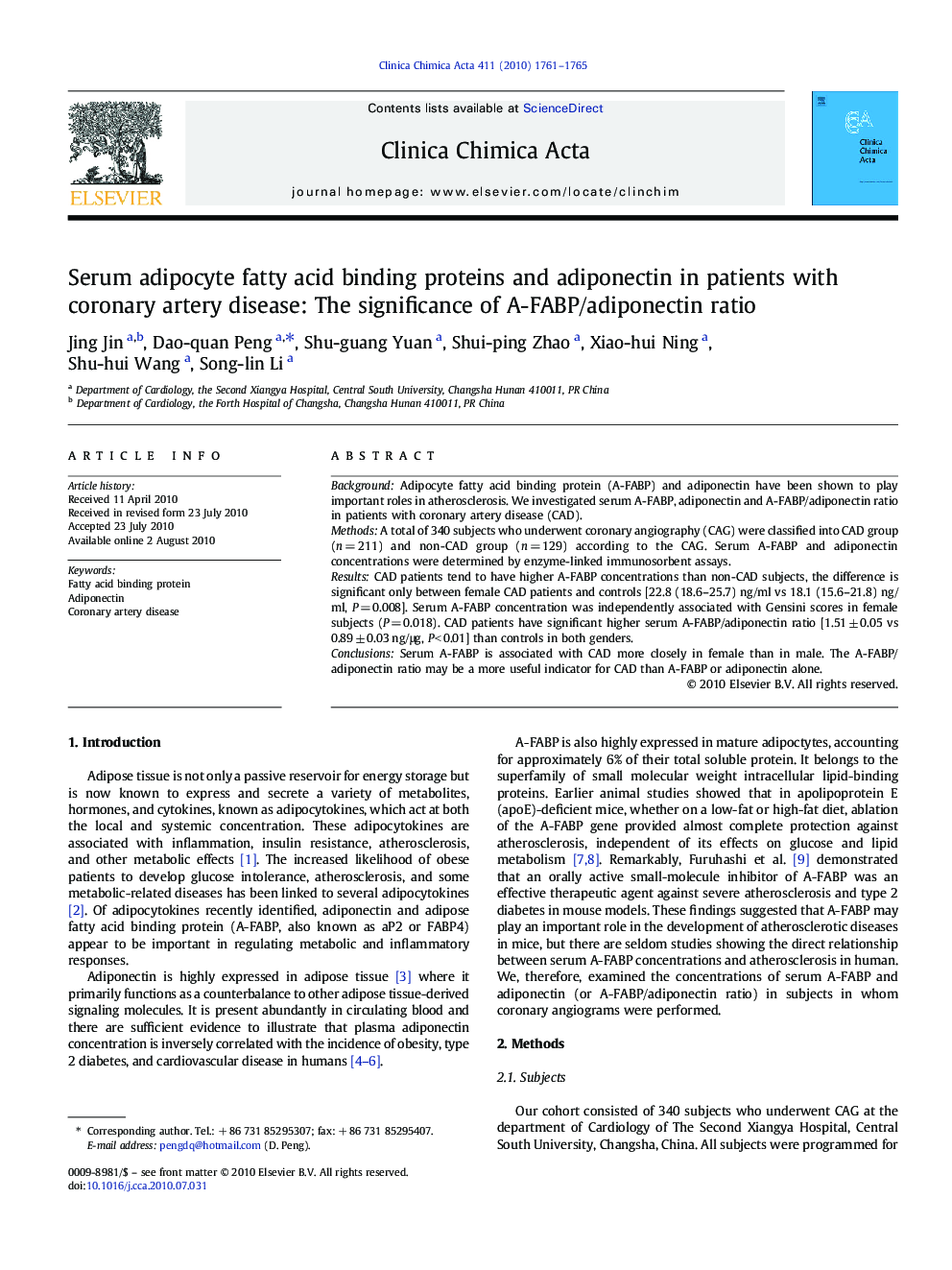| Article ID | Journal | Published Year | Pages | File Type |
|---|---|---|---|---|
| 1966742 | Clinica Chimica Acta | 2010 | 5 Pages |
BackgroundAdipocyte fatty acid binding protein (A-FABP) and adiponectin have been shown to play important roles in atherosclerosis. We investigated serum A-FABP, adiponectin and A-FABP/adiponectin ratio in patients with coronary artery disease (CAD).MethodsA total of 340 subjects who underwent coronary angiography (CAG) were classified into CAD group (n = 211) and non-CAD group (n = 129) according to the CAG. Serum A-FABP and adiponectin concentrations were determined by enzyme-linked immunosorbent assays.ResultsCAD patients tend to have higher A-FABP concentrations than non-CAD subjects, the difference is significant only between female CAD patients and controls [22.8 (18.6–25.7) ng/ml vs 18.1 (15.6–21.8) ng/ml, P = 0.008]. Serum A-FABP concentration was independently associated with Gensini scores in female subjects (P = 0.018). CAD patients have significant higher serum A-FABP/adiponectin ratio [1.51 ± 0.05 vs 0.89 ± 0.03 ng/μg, P < 0.01] than controls in both genders.ConclusionsSerum A-FABP is associated with CAD more closely in female than in male. The A-FABP/adiponectin ratio may be a more useful indicator for CAD than A-FABP or adiponectin alone.
